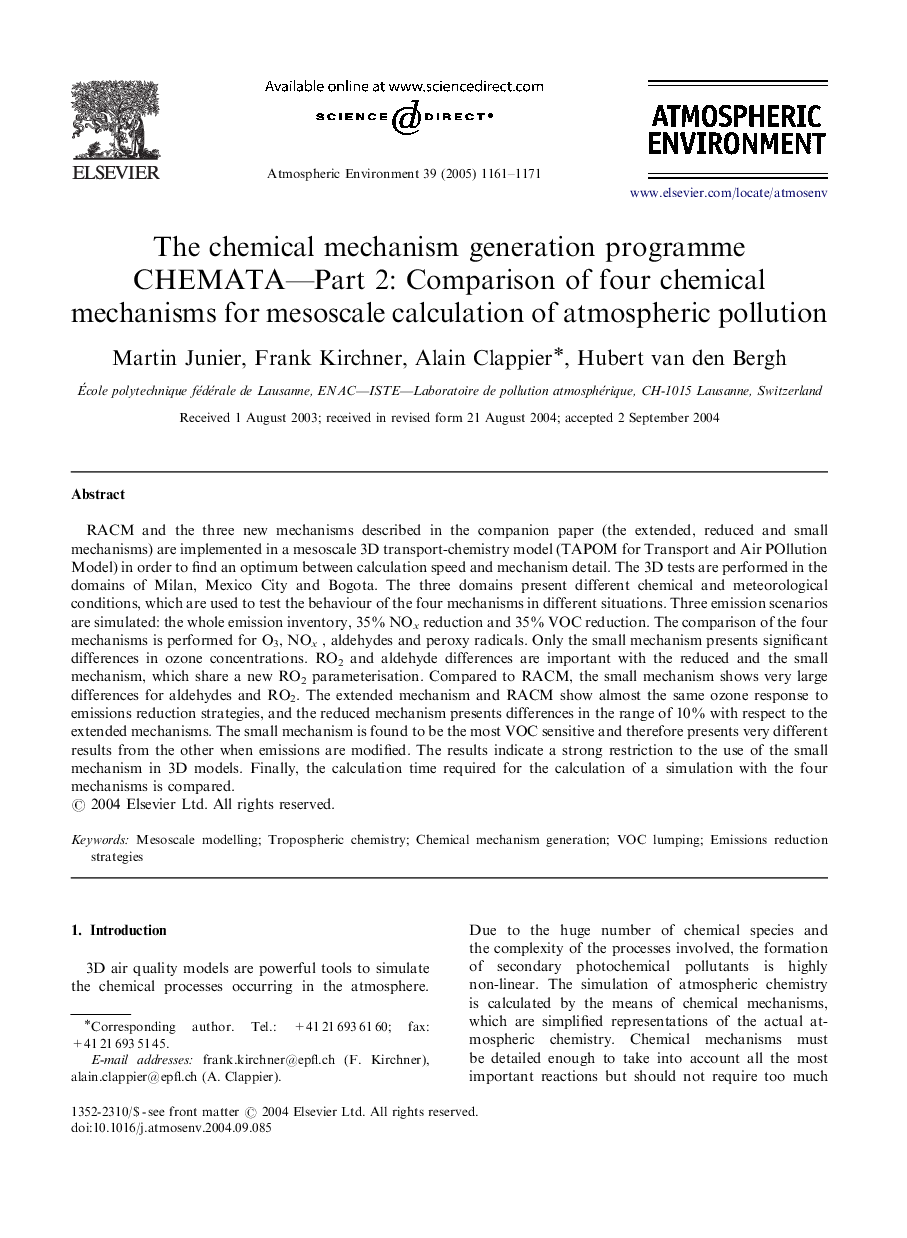| Article ID | Journal | Published Year | Pages | File Type |
|---|---|---|---|---|
| 9458657 | Atmospheric Environment | 2005 | 11 Pages |
Abstract
RACM and the three new mechanisms described in the companion paper (the extended, reduced and small mechanisms) are implemented in a mesoscale 3D transport-chemistry model (TAPOM for Transport and Air POllution Model) in order to find an optimum between calculation speed and mechanism detail. The 3D tests are performed in the domains of Milan, Mexico City and Bogota. The three domains present different chemical and meteorological conditions, which are used to test the behaviour of the four mechanisms in different situations. Three emission scenarios are simulated: the whole emission inventory, 35% NOx reduction and 35% VOC reduction. The comparison of the four mechanisms is performed for O3, NOx , aldehydes and peroxy radicals. Only the small mechanism presents significant differences in ozone concentrations. RO2 and aldehyde differences are important with the reduced and the small mechanism, which share a new RO2 parameterisation. Compared to RACM, the small mechanism shows very large differences for aldehydes and RO2. The extended mechanism and RACM show almost the same ozone response to emissions reduction strategies, and the reduced mechanism presents differences in the range of 10% with respect to the extended mechanisms. The small mechanism is found to be the most VOC sensitive and therefore presents very different results from the other when emissions are modified. The results indicate a strong restriction to the use of the small mechanism in 3D models. Finally, the calculation time required for the calculation of a simulation with the four mechanisms is compared.
Related Topics
Physical Sciences and Engineering
Earth and Planetary Sciences
Atmospheric Science
Authors
Martin Junier, Frank Kirchner, Alain Clappier, Hubert van den Bergh,
